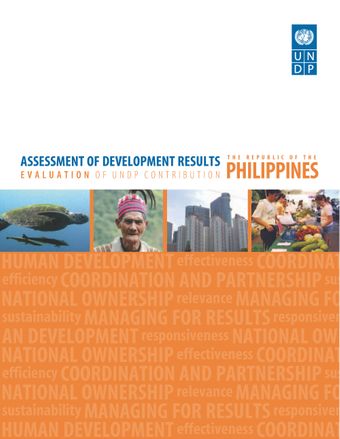Context

- Author: United Nations Development Programme
- Main Title: Assessment of Development Results - The Philippines , pp 5-17
- Publication Date: March 2013
- DOI: https://doi.org/10.18356/9cb8c6fa-en
- Language: English
Since independence, the Philippines has passed through various phases of development. After a period of import substitution industrialization up to the 1980s, the services sector started to grow faster, and the agriculture sector shrank as a contributor to gross domestic product (GDP). Martial law, declared in 1972, was ended by the ‘EDSA Revolution’ of 1986. Already, economic growth was falling behind other countries in the region. Real per capita growth was negative during the 1980s. A succession of crises—the eruption of Mount Pinatubo in 1992, power shortages in 1993, and the Asian financial crisis of 1997—contributed to low per capita income growth in the 1990s. A key government change was the Local Government Code of 1991, which shifted many responsibilities to provinces and municipalities at a time of inadequate resources.
-
From This Site
/content/books/9789210549691c005dcterms_title,dcterms_subject,pub_keyword-contentType:Journal -contentType:Contributor -contentType:Concept -contentType:Institution105



